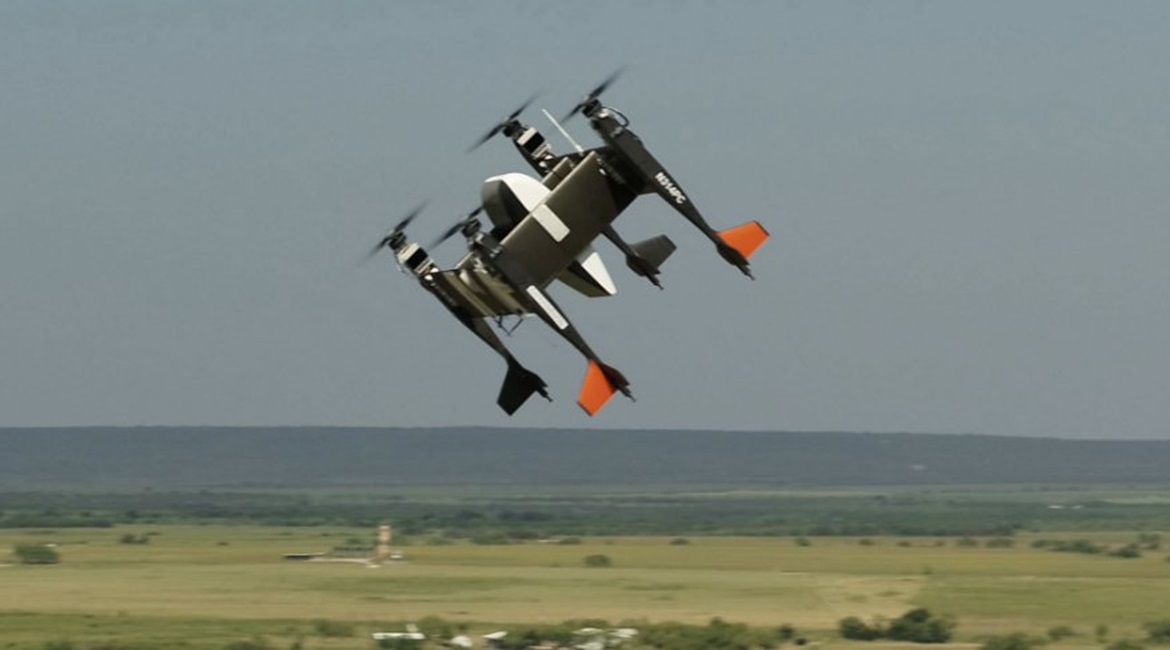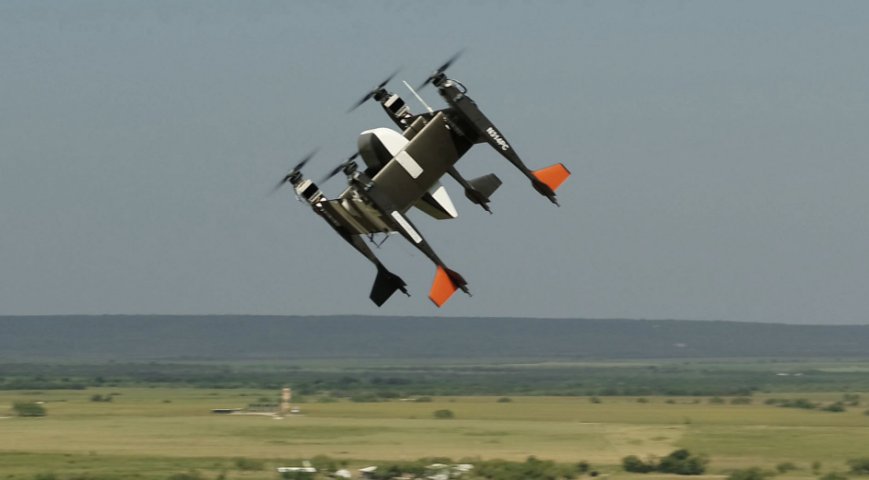
Bell’s Autonomous Pod Transport (APT) 70 scalable modular unmanned vertical take-off and landing (VTOL) aircraft completed its first autonomous flight in mid-August.
The APT 70 is part of the eVTOL family of vehicles Bell is developing and can reach speeds of more than 87 kt with a baseline payload capability of 32 kg. Bell spokesperson Mike Reilly said on 28 August that the aircraft, in its first flight, performed take off in the helicopter mode, transitioned to airplane mode, waypoint following, and reconverted to helicopter mode for landing, all autonomously.
The Bell Autonomous Pod Transport (APT) 70 scalable modular unmanned vertical take-off and landing (VTOL) aircraft (left) and the smaller Bell APT 20 aircraft. (Bell)
The APT 70 reached 70 kt during the demonstration. Reilly said the aircraft did not carry payload for the demonstration.
All testing has been within visual line-of-sight (VLOS). However, Reilly said, 56 km endurances have been validated in VLOS testing. Beyond visual line-of-sight (BVLOS) flights are expected later this year, pending US Federal Aviation Administration (FAA) approvals.
Bell will use the APT 70 to demonstrate a simulated commercial mission in the US national airspace system and conduct BVLOS flight operations through the National Aeronautics and Space Administration (NASA) Systems Integration and Operationalization (SIO) demonstration activity. The demonstration is expected to be held in mid-2020. Reilly said the demonstration will be an urban BVLOS flight in the Dallas-Fort Worth, Texas, area within controlled and uncontrolled airspace.

The Bell Autonomous Pod Transport (APT) 70 scalable modular unmanned vertical take-off and landing (VTOL) aircraft (left) from a flight in August 2019. (Bell)
Looking to read the full article?
Gain unlimited access to Janes news and more...




